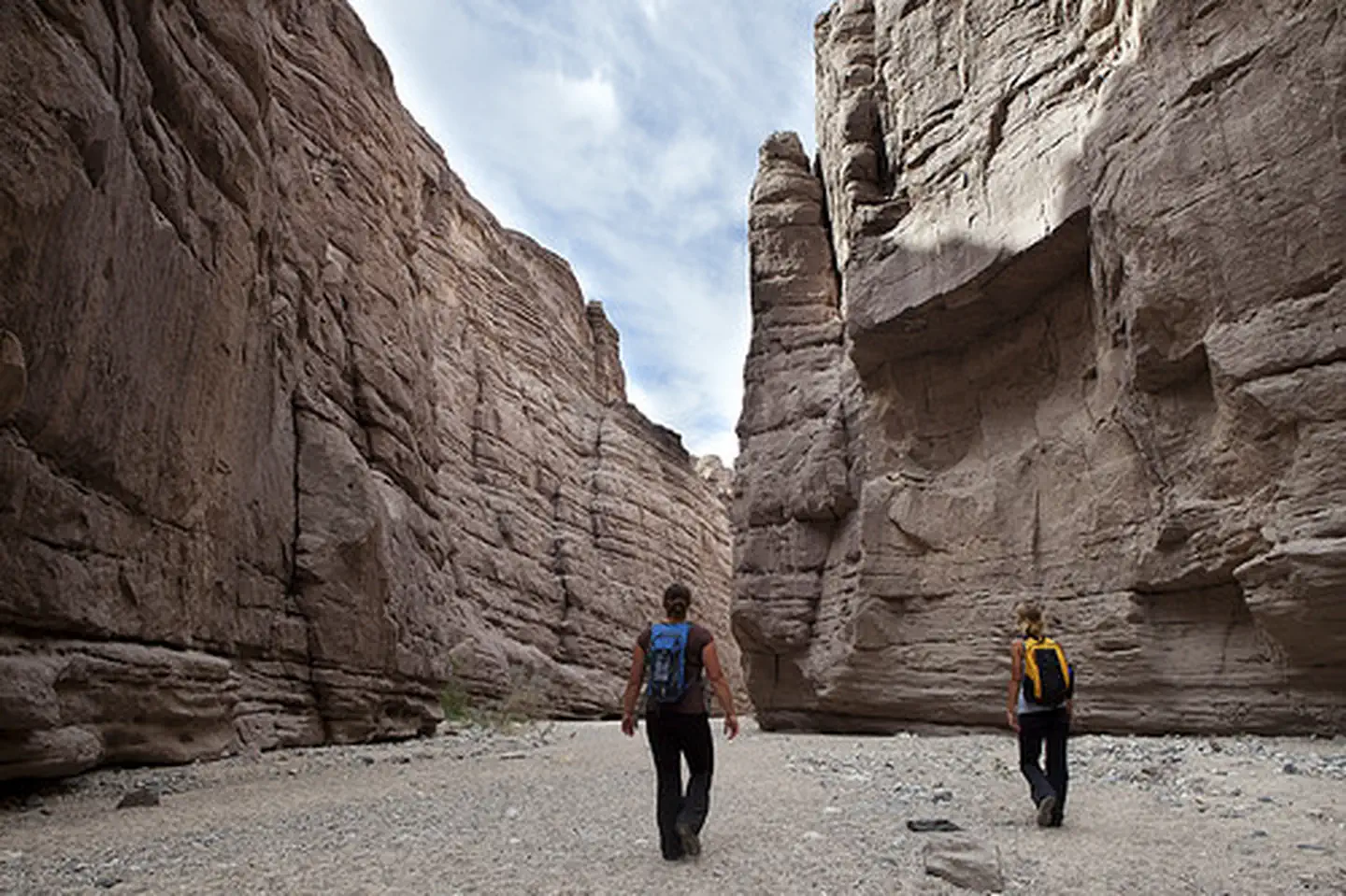Mecca Hills Wilderness
Overview
Mecca Hills Wilderness is managed by Bureau of Land Management and is located near Blythe, California.
Overview
The Mecca Hills Wilderness now contains a total of 26,242 acres and is managed by the BLM's Palm Springs-South Coast Field Office. All of the Wilderness is in the state of California. In 1994 the Mecca Hills Wilderness became part of the now over 109 million acre National Wilderness Preservation System.
Thanks to the restless San Andreas Fault, the geologic formations of Mecca Hills Wilderness are among the most unusual sites of their kind in the world. Entire regions are exposed layers of eroded rock, some over 600 million years old, and are a source of valuable information to scientists about the effects of tremors on the earth's crust. The area is a badlands labyrinth, a natural maze of small, narrow, steep canyons. Colorful Painted Canyon runs in a general north-south path through the middle of the Wilderness. Sandy washes sprinkled with ironwood, smoke trees, and paloverde divide the area, while ocotillo squat on gentler slopes and the tops of mesas. Bighorn sheep occasionally cross over from the Orocopia Mountains on the east, where they find more water. You may see spotted bats, desert tortoises, and prairie falcons.
The non-Wilderness corridor of Box Canyon Road splits off a small southern section of the area in which you'll find Sheep Hole Oasis and Hidden Springs Canyon (reliable sources for water). If you look closely, you'll discover caves, known locally as grottoes.
Regulations
In wilderness, you can enjoy challenging recreational activities and extraordinary opportunities for solitude. In an age of "...increasing population, accompanied by expanding settlement and growing mechanization,..." you play an important role in helping to "...secure for the American people of present and future generations the benefits of an enduring resource of wilderness" as called for by Congress in the Wilderness Act of 1964. Please follow the regulations in place for this area, and use Leave No Trace techniques when visiting to ensure protection of its unique natural and experiential qualities.
How to follow the seven standard Leave No Trace principles differs in different parts of the country (desert vs. Rocky Mountains). Click on any of the principles listed below to learn more about how they apply. Leave No Trace principles: Plan Ahead and Prepare, Travel and Camp on Durable Surfaces, Dispose of Waste Properly, Leave What You Find, Minimize Campfire Impacts, Respect Wildlife, Be Considerate of Other Visitors .
Regulations: Motorized equipment and equipment used for mechanical transport are generally prohibited on all federal lands designated as wilderness. This includes the use of motor vehicles (including OHVs), motorboats, motorized equipment, bicycles, hang gliders, wagons, carts, portage wheels, and the landing of aircraft including helicopters, unless provided for in specific legislation. In a few areas some exceptions allowing the use of motorized equipment or mechanical transport are described in the special regulations in effect for a specific area. Contact the agency for more information about regulations.
Things to Do at Mecca Hills Wilderness
Recreation Activities
Popular activities at Mecca Hills Wilderness include:
Nearby Activities
- Camping
- Hiking
- Photography
- Picnicking
- Wilderness
- Wildlife Viewing
Plan Your Visit
Getting There
Riverside County; 15 miles southeast of Indio, California. Access this wilderness from the east from State Highway 195 (Box Canyon Road) via Interstate 10 or from the south at Mecca via State Highway 111. Painted Canyon Road provides four-wheel drive access at the intersection of State Highway 195 and the Coachella Canal.
GPS Coordinates: 33.61626000000000, -115.97973900000000
Contact & Resources
Phone: 760-833-7100
Additional Information:
